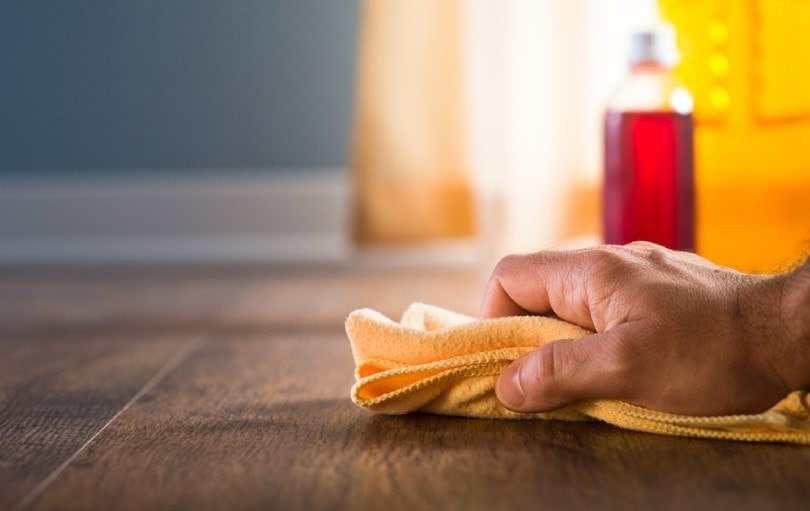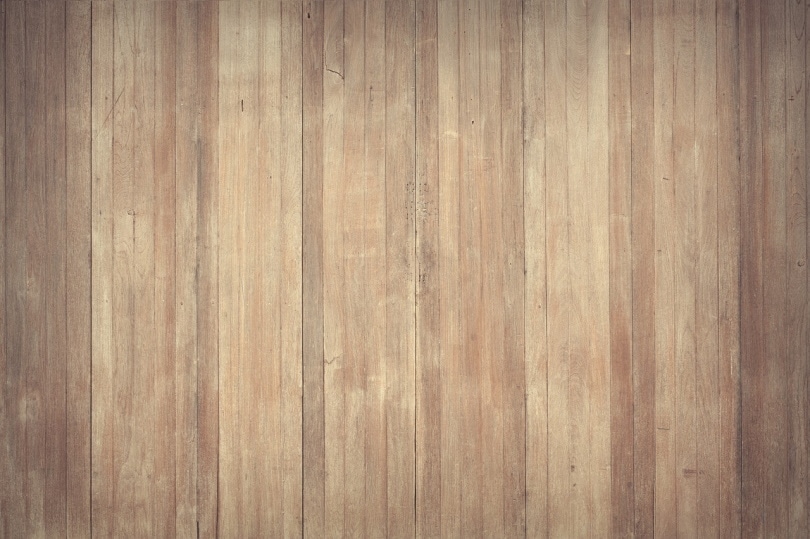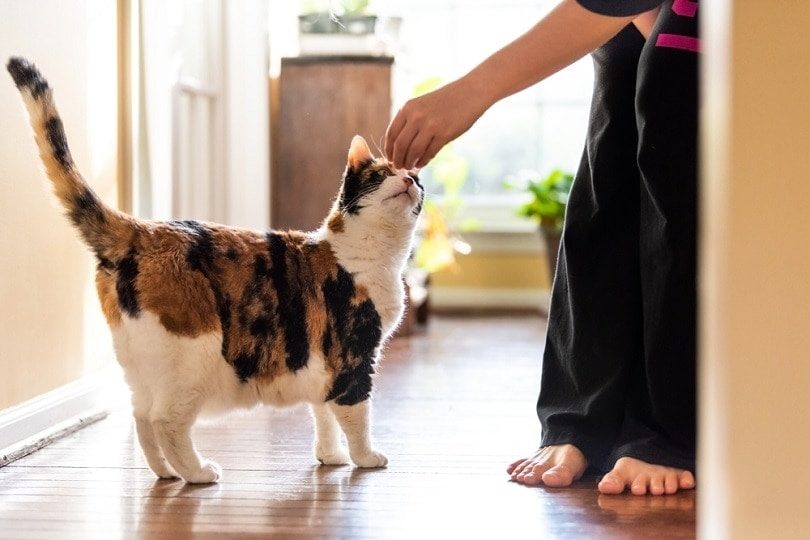How to Remove Old Cat Urine From Hardwood Floors: 3 Simple Steps

Updated on

There’s arguably no smell more recognizable and pungent than the smell of cat urine. It not only permeates the entire room but can stick around long after cleaning too. Wood floors are notorious for holding in the odor of cat urine due to the porous nature of the wood, which the urine seeps into, and the smell can be extremely difficult to get rid of. Carpets can easily be washed, but wood floors are far more of a challenge.
Luckily, there are solutions! While it may not be easy, with the right products and a bit of determination and patience, you can rid your hardwood floors of the smell of cat urine for good. Read on to find out how!
 Why Does Cat Urine Smell So Bad?
Why Does Cat Urine Smell So Bad?
Cat urine consists primarily of urea, urobilin/urobilinogen, uric acid, sodium, creatinine, and pheromones, all of which are in a concentrated form. Bacteria break down the urea, which releases ammonia, resulting in a pungent odor. Also, the pheromones in cat urine get stinkier as they break down, a result of cats in the wild marking their territory and requiring the scent to stick around for as long as possible. This is why typical household cleaners and soaps do little to get rid of the smell of cat urine.
The 3 Steps to Removing Cat Urine From Hardwood Floors
Step 1: Preparation
The first step is to gather all the materials and products that you need. You’ll need a large bucket, a sponge, a scrubbing brush, a mop, and the product of your choice. There are several over-the-counter products for odor removal, but you can use homemade mixtures too. Baking soda and vinegar is a tried-and-tested solution, but it won’t remove old, really soaked-in odors. Hydrogen peroxide is another solution but must be diluted with water. Around 3% peroxide to one part water is a good ratio, so roughly 3 milliliters of peroxide to 1 liter of water.
Step 2: Spot clean the affected area
Before applying your solution, you’ll need to give the area a thorough spot-clean with a sponge or mop and a solution of soapy water. Wait for the area to dry thoroughly, and give it a light sweeping to remove any debris before applying your solution of choice, and dispose of any sponges that you used to clean.

Step 3: Apply the solution
Once the area is clean dry and free from hard particles, you can apply your solution. If you’ve chosen a commercial, enzymatic cleaner, follow the instructions on the product for odor removal. If you’re using hydrogen peroxide, apply a moistened cloth or sponge of the peroxide solution to the affected area, let it rest for 1–2 hours, and wipe the area clean with a separate, clean cloth.
Vinegar and baking soda are also great options that are non-toxic and safer for pets and highly effective when used together. Sprinkle the soda onto the affected area, and let it rest for 10–15 minutes to soak up any residue. Next, pour a diluted solution of vinegar (roughly ½ cup of vinegar to 2 cups of water) onto the baking soda. You’ll notice the solution fizzing and bubbling, and you can let this stand for another 10 minutes or so before cleaning it with a mop or cloth.
 If All Else Fails
If All Else Fails
Usually, these methods should be enough to rid your floors of old cat urine smell, but there are some exceptions. Some houses have impermeable surfaces, meaning they’re sealed with a varnish of some kind that makes these methods almost useless. Old cat urine has slowly soaked into the seams of the flooring, making the smell difficult to remove. If these methods don’t work, you may need to sand and then reseal the area to get rid of the smell or in extreme cases, replace the affected planks if the urine has settled in.
Before bringing out your tools, you could also try out an enzyme cleaner that works at truly eradicating odors, instead of masking or diluting them. Apply the solution to the affected areas and the bio-enzymes go to work – even if the stains and odors are trapped below the immediate surface. There are pet formulas available that are just as natural as the homemade version above.
Our favorite enzyme cleaner for eliminating pet smells and stains is our very own Hepper Advanced Bio-Enzyme Pet Stain & Odor Eliminator Spray. It makes clean-up a breeze because it permanently removes even the very worst smells and stains (urine, feces, vomit, you name it!) from basically any surface you can imagine.
- ADVANCED ENZYMATIC CLEANER - Penetrates the most stubborn smells and stains at the deepest molecular...
- FOR ANY MESS, ON ANY SURFACE - This pet odor eliminator cleans your carpets, floors, furniture,...
 Conclusion
Conclusion
Old cat urine can be extremely difficult to get rid of on hardwood floors, so cleaning it as quickly as possible is vital. Of course, this is not always possible, and you may need to take more drastic measures. A carefully applied solution of either commercial cleaners or over-the-counter products can do the trick, but in rare cases you may need to sand and reseal the area or even replace the planks.
Featured Image Credit: Stokkete, Shutterstock
 Why Does Cat Urine Smell So Bad?
Why Does Cat Urine Smell So Bad? If All Else Fails
If All Else Fails









